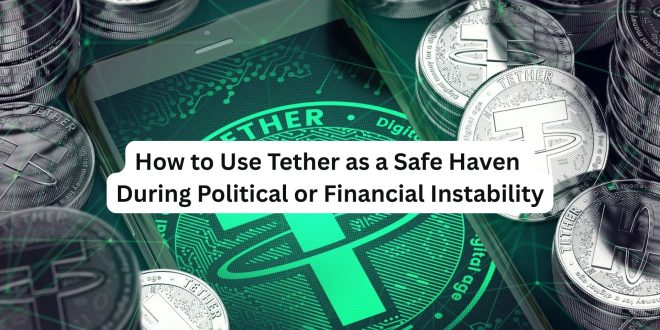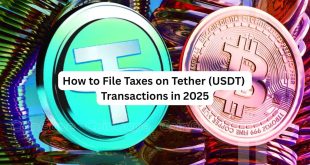In times of economic uncertainty, political chaos, or currency devaluation, many people around the world are turning to stablecoins like Tether (USDT) as a financial lifeline. Whether you’re in a country experiencing inflation, capital controls, or banking restrictions, Tether offers a digital dollar alternative that is fast, stable, and globally accessible.
In this post, we’ll explore how you can use Tether (USDT) as a safe haven to preserve your wealth, make cross-border transactions, and protect your financial freedom.
🧭 What is Tether (USDT)?
Tether is a stablecoin pegged to the US Dollar, meaning 1 USDT ≈ 1 USD. Unlike Bitcoin or Ethereum, which are volatile, Tether remains stable in price and is widely accepted across crypto exchanges and platforms. It exists on multiple blockchains, including Ethereum (ERC-20), Tron (TRC-20), Solana, and others.
🌍 Why Tether Matters in Financial Crisis
- Protection Against Inflation
In countries like Argentina, Zimbabwe, Lebanon, and Venezuela, the local currency can lose value rapidly. Holding USDT allows individuals to protect their savings in a dollar-equivalent currency without needing a US bank account. - Access to Global Markets
Even when national banking systems fail or restrict foreign currency, USDT gives users access to international markets, exchanges, and payment systems. - Fast Cross-Border Transactions
Sending USDT to friends, family, or business partners abroad is faster and cheaper than traditional banks or remittance services. - Freedom from Capital Controls
Some governments limit how much foreign currency citizens can hold or send abroad. USDT helps bypass such restrictions legally on decentralized platforms.
🛠️ How to Get and Use Tether Safely
- Download a Crypto Wallet
Use trusted wallets like Trust Wallet, Binance, Exodus, or Ledger for secure storage. - Buy Tether (USDT)
You can buy USDT via:- Crypto exchanges (Binance, Kraken, OKX)
- Peer-to-peer (P2P) marketplaces
- Local crypto vendors (in cash or mobile money)
- Choose the Right Blockchain
- TRC-20 (Tron): Very low transaction fees
- ERC-20 (Ethereum): More secure, but higher gas fees
- Solana/Polygon: Fast and affordable alternatives
- Transfer & Store
Transfer USDT to your wallet and avoid keeping large amounts on exchanges unless trading. - Use It for Daily Payments or Saving
- Pay freelancers or remote workers
- Buy gift cards and mobile airtime
- Save during local currency depreciation
🛡️ Tips for Staying Safe
- Always double-check wallet addresses before sending USDT.
- Use 2FA and secure passwords for your exchange accounts.
- Only use reliable P2P platforms with escrow protection.
- Keep your private keys and recovery phrases offline and private.
📈 Real-World Examples
- In Nigeria, many youth and small businesses use USDT to bypass FX restrictions.
- In Turkey, people use Tether to protect against lira depreciation.
- In Ukraine, during the conflict, citizens used USDT for emergency funds and safe storage.
🧠 Final Thoughts
Tether isn’t just a crypto trading tool — it’s becoming a global lifeline. Whether you live in a country with political unrest, inflation, or a collapsing banking system, USDT offers a bridge to financial stability and global access.
Start small. Stay informed. Be in control of your money.
 UBUCH ubuch | Honest Tech Reviews & Tutorials for Everyone
UBUCH ubuch | Honest Tech Reviews & Tutorials for Everyone




